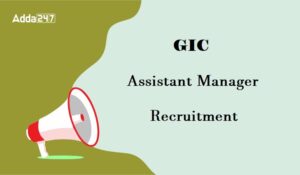Reasoning Questions for NIACL AO 2019
Directions (1-5): Study the following information and answer the questions given below:
There are eight friends i.e. B, C, L, M, K, P, S and T who have seated around a circular table and faces outside the centre. They are conducting debate on different topic in which these Modi government has failed. The topics are Farmers, Education, Inflation, Pakistan, Employment, Social Justice, law and order and Rural development.
M does not sit with P. The one who is opposing the Modi’s stand on Pakistan sits opposite to K. The one who is opposing for the employment of young Indians sits 3rd right of the one who is opposing on rural development. L sits with S but he is immediate neighbor of T. T sits opposite to the one who is opposing on Inflation. S does not do the debate on Social Justice policy. P sits immediate right of the one who is doing debate on rural development. There is one friend between P and T but T does not sit with K. M who sits opposite to B and doing debates on law and order of whole country. The one who is doing debates on education policy of Modi government sits immediate right of the one who is opposing for Social Justice policy of this government. K is doing debates on rural development policy.
Q1. Who among the following, doing debate on farmers?
(a) P
(b) L
(c) S
(d) B
(e) C
Q2. Who sits 2nd left of the one who is opposing the Pakistan policy of this government?
(a) B
(b) S
(c) P
(d) M
(e) C
Q3. Who sits opposite to S?
(a) P
(b) K
(c) T
(d) M
(e) B
Q4. Who among the following is immediate neighbors of C?
(a) B,T
(b) M, K
(c) L,S
(d) B,P
(e)None of these
Q5. Who among the following sits opposite to the one who is doing the debate on Employment?
(a) K
(b) P
(c) M
(d) C
(e) None of these
Directions (6-10): Study the following information carefully to answer the given questions.
Q6. Statements: M<N, N>O, O=P, P≥Q
Conclusions: 1) N>Q 2) M>Q
(a) Only conclusion 1 follows
(b) Only conclusion 2 follows
(c) Either conclusion 1 or 2 follows
(d) Neither conclusion 1 nor 2 follow
(e) Both conclusion 1 and 2 follows
Q7. Statements: A>B, B=C, C≤X, X=Y
Conclusions: 1) C>Y 2) C≥B
(a) Only conclusion 1 follows
(b) Only conclusion 2 follows
(c) Either conclusion 1 or 2 follows
(d) Neither conclusion 1 nor 2 follow
(e) Both conclusion 1 and 2 follows
Q8. Statements: A=B, B≥C, C≥D, D<E
Conclusions: 1) D=A 2) B≥D
(a) Only conclusion 1 follows
(b) Only conclusion 2 follows
(c) Either conclusion 1 or 2 follows
(d) Neither conclusion 1 nor 2 follow
(e) Both conclusion 1 and 2 follows
Q9. Statements: A≥B, B≥C, C=D, D<E
Conclusions: 1) A≥E 2) E=C
(a) Only conclusion 1 follows
(b) Only conclusion 2 follows
(c) Either conclusion 1 or 2 follows
(d) Neither conclusion 1 nor 2 follow
(e) Both conclusion 1 and 2 follows
Q10. Statements: A=E, E<C, C>B, B=D
Conclusions: 1) C>D 2) B<A
(a) Only conclusion 1 follows
(b) Only conclusion 2 follows
(c) Either conclusion 1 or 2 follows
(d) Neither conclusion 1 nor 2 follow
(e) Both conclusion 1 and 2 follows
Directions (11-15): In each of the following below is given a group of letters followed by four combinations of digits/symbols numbered (a), (b), (c) and (d). You have to find out which of the combinations correctly represents the group of letters based on the following coding system and mark the number of that combination as the answer. If none of the four combinations correctly represents the group of letters, mark (e), i.e. ‘None of these’, as the answer-
Conditions:
(i) If first letter is vowel and last letter is consonant then both are coded with the code of the consonant.
(ii) If both the first and the last letter of the group are vowels, their codes are to be interchanged.
(iii) If the first letter is a consonant and the last letter is a vowel, both are to be coded as the code for the vowel.
(iv) If both second and fourth letter is vowel then both are coded as the code of second letter.
Q11.QFDWVI
(a) @%72©µ
(b) @%72©@
(c) %72µ@
(d) @72©5@
(e) None of these
Q12.OCGSMK
(a) ρ&
(b) ©&
(c) 8#169&
(d) ڢ
(e) None of these
Q13.ASVQKU
(a) %65&3µ
(b) 65&7&µ
(c) %653&µ
(d) 65&79&
(e) None of these
Q14.DOWIML
(a) 82©89$
(b) 28©89$
(c) 8376©$
(d) $897©2
(e) None of these
Q15.MFCLGD
(a) 79#$21
(b) 97#$21
(c) 97$#12
(d) 97#$12
(e) None of these
Solution (1-5):
S1.Ans.(c)
Sol.
S2.Ans.(a)
Sol.
S3.Ans.(a)
Sol.
S4.Ans.(b)
Sol.
S5.Ans.(d)
Sol.
Solution (6-10):
S6.Ans.(a)
Sol.
S7.Ans.(d)
Sol.
S8.Ans.(b)
Sol.
S9.Ans.(d)
Sol.
S10.Ans.(a)
Sol.
Solution (11-15):
S11. Ans.(d)
Sol. By using condition (iii), the code will be @72©5@
S12. Ans.(b)
Sol. By using condition (i), the code will be©&
S13. Ans.(c)
Sol. By using condition (ii), The code will be %653&µ
S14. Ans.(b)
Sol. By using condition (iv), the code will be28©89$
S15. Ans.(d), No Condition Applied
Sol. The code will be 97#$12.






 The Hindu Review October 2022: Download ...
The Hindu Review October 2022: Download ...
 RRB NTPC Exam Date 2024, 11,558 Vacancy ...
RRB NTPC Exam Date 2024, 11,558 Vacancy ...
 GIC Assistant Manager Exam Date 2024 Out...
GIC Assistant Manager Exam Date 2024 Out...




